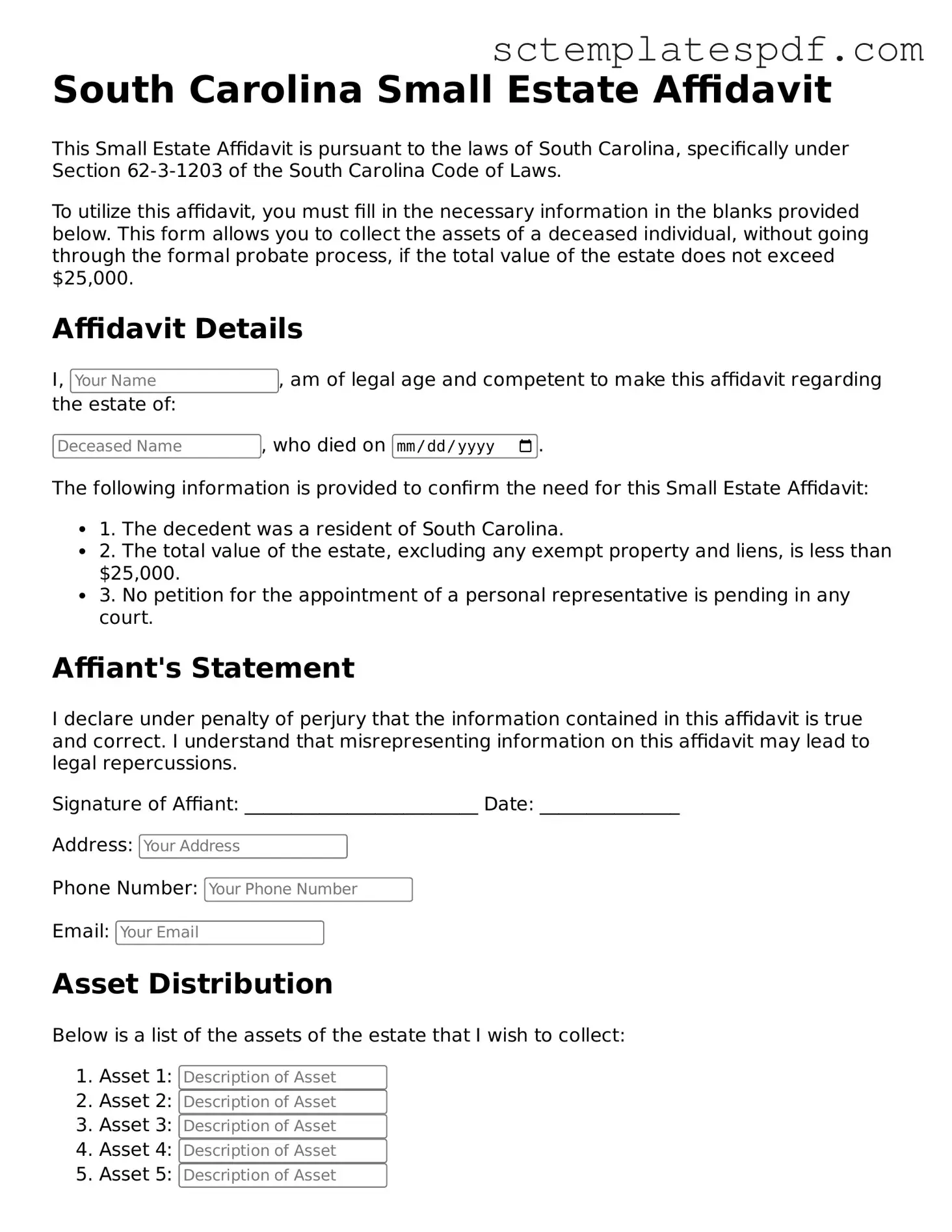In South Carolina, managing the estate of a deceased loved one can often feel overwhelming, especially when it comes to navigating the legal requirements involved. For individuals facing the loss of someone close, the Small Estate Affidavit form offers a streamlined process for settling estates that fall below a certain value threshold. This form allows heirs and beneficiaries to bypass the lengthy and often complicated probate process, provided the estate meets specific criteria. Typically, the Small Estate Affidavit can be utilized when the total value of the estate does not exceed $25,000, excluding certain assets like real estate. By completing this affidavit, individuals can claim personal property and settle debts without the need for formal court proceedings. The process involves gathering necessary documentation, including proof of death and a list of assets, and submitting the affidavit to the appropriate parties, such as financial institutions or other entities holding the deceased's assets. Understanding the requirements and implications of using the Small Estate Affidavit can significantly ease the burden during a difficult time, allowing families to focus on healing while ensuring that their loved one's affairs are handled efficiently.
